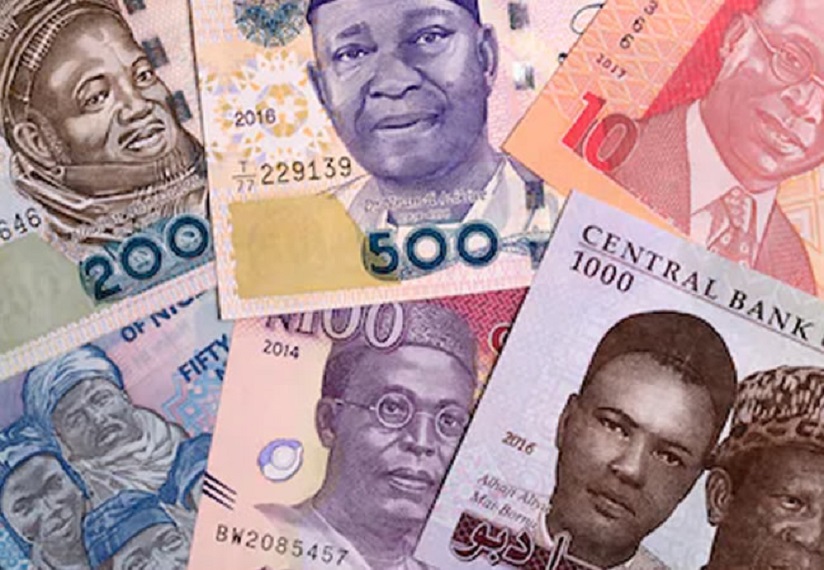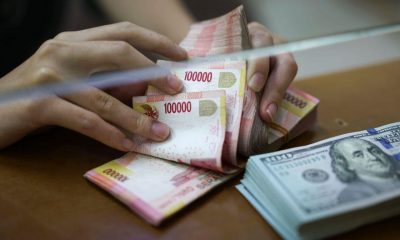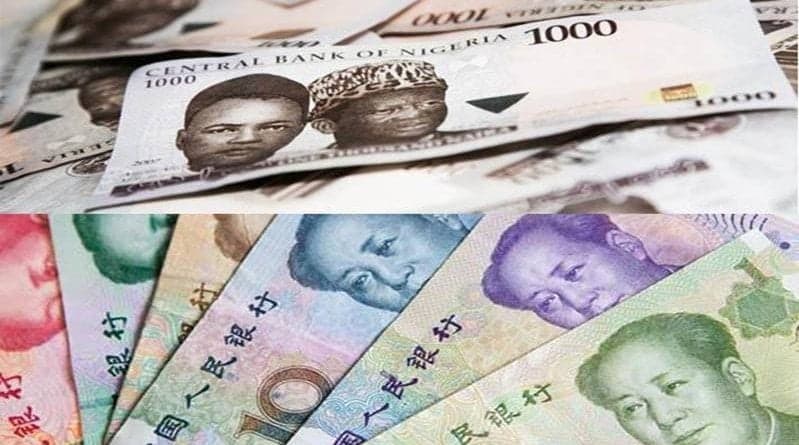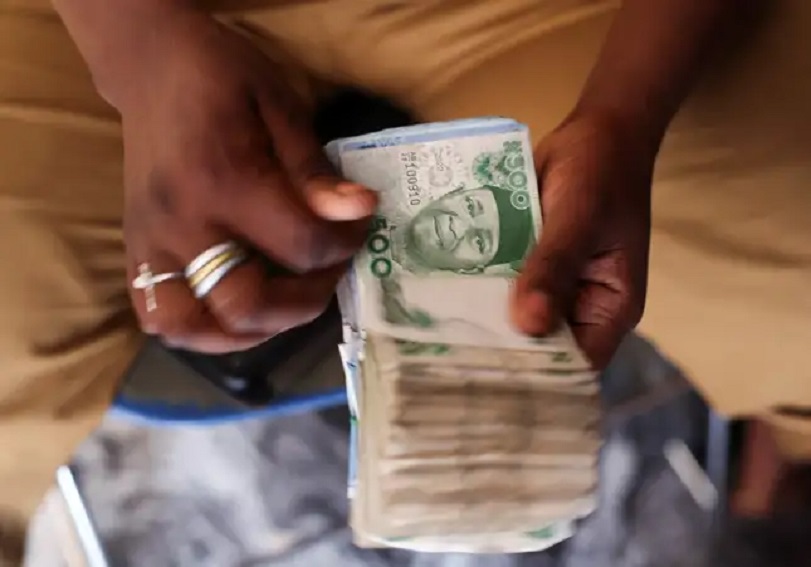Economy
Redesign Gone Wrong? – Costly Cashless

How does the central bank retrieve 84.5% of a country’s currency in circulation in just 90 days? This was one of the many questions seemingly begging for answers when Nigeria’s apex bank announced its plan to redesign the three higher value notes of the naira (N200, N500 and N1,000) on October 26, 2022.
Fast-forward three months and three weeks (a week before the general elections), and a majority of Nigerians are now confronted with a shortage of naira notes that is proving disruptive to lives and livelihoods.
Given the analyst consensus that a 90-day window was simply insufficient to complete the project, it is difficult to conceive a scenario where the Central Bank of Nigeria (CBN) did not anticipate the challenges which have accompanied this transition period.
President Muhammadu Buhari, in his address to Nigerians on February 16, 2023, said… “I am not unaware of the obstacles placed on the path of innocent Nigerians by unscrupulous officials in the banking industry, entrusted with the process of implementation of the new monetary policy. I am deeply pained and sincerely sympathise with you all over these unintended outcomes.”
In what appears to be a clear case of buck-passing by the federal government, the blame is being laid squarely on the banking industry’s purported failings and not any lapses in the policy’s design or hasty execution.
Depending on whom you ask, a performance appraisal of the CBN’s execution of the redesign project would range from grossly unprepared to poorly perceived.
In our opinion, the CBN failed to do enough through the media (television, radio, newspapers, new media) to effectively sensitise the public, particularly the rural dwellers, and manage expectations.
Most Nigerians assumed a simple exchange of old Naira notes for new ones. However, if we are to believe claims by the Kaduna State Governor, Nasir El-Rufai, the CBN printed circa N400 billion in new notes, leaving a shortfall of N2.3 trillion.
So, while the exercise has reportedly reeled in 80% (N2.1 trillion) of the N2.7 trillion held outside the banking system thus far, the average Nigerian is once again confronted with a test of resilience. Cash has become commoditized, hoarded by many, and now commanding outrageous premiums of up to 20-30% at Point-of-Sale (PoS) outlets.
The Road to Perdition is Famously paved with Good
Public outrage has degenerated into violent protests in some cities, with incidents of vandalism and arson at several banks’ facilities – and PoS outlets. The cash crunch and the uncertainty surrounding the policy are fanning a long-simmering fire of public resentment, triggered by deteriorating economic conditions and recently exacerbated by unending petrol shortages.
The result has been a significant loss of manhours, logistics constraints to many businesses and possible threats to the successful execution of the general elections.
The CBN, when launching the redesign project, outlined the objectives clearly. Perhaps its most compelling arguments centred on the need to combat terrorism and reduce counterfeiting.
The others largely revolved around driving the cashless policy through a shift away from cash and toward increased adoption of digital banking channels for transactions. This was underscored by a need to deepen financial inclusion (currently at 64%) and drive an efficient payment system that would improve the efficacy of monetary policy tools in combating inflation.
While the design of the policy gave room for underhand dealings by a privileged few, where the banking industry has really fallen short is in the capacity of the current digital payment infrastructure, which was already plagued by ‘transaction failures’ and an apparent inability to implement instant refunds, to handle the surge in transaction volumes.
For context, in the five years leading up to 2021, electronic payment surged by 386% to N272 trillion, accounting for over 94% of the entire value of transactions in Nigeria’s banking system. Financial institutions also responded accordingly by upscaling digital infrastructure to support the increasing adoption of electronic banking.
Recently, the Nigeria Inter-Bank Settlement System (NIBSS) reported a spike in the value of total cashless transactions in Nigeria to N39.58 trillion in January 2023 – a year-on-year increase of 45.41% – largely on the back of the CBN’s redesign and cash withdrawal policy.
Nevertheless, on evidence, the abrupt shift to electronic payments, which the current cash shortage has necessitated, has overwhelmed the banking industry’s digital payments infrastructure.
Nigerians are currently grappling with an unprecedented rate of electronic transaction failures. To further complicate matters, many transactions have not only failed, but refunds are taking days, even weeks in some instances, leaving many stranded and constraining commercial activity.
Unintended Consequences
The hardest hit by the policy have been the most vulnerable members of the population (the poor, the unbanked and the rural dwellers).
Nigeria is still a largely cash-dependent economy, with informal economic activity accounting for approximately 65% of GDP and being dominated by Micro, Small and Medium Enterprises (MSMEs). These MSMEs account for up to 96% of businesses and 86.3% of the national workforce. These are mostly cash-based businesses – particularly the micro-enterprises, which account for 99.8% of Nigeria’s 37.1 million MSMEs.
Given the low levels of education and exposure of a significant number of Nigerians in this category, many of whom live in rural areas with inadequate or non-existent telecommunications infrastructure, a quick and seamless transition to digital payment channels was always unlikely.
In addition, while mobile phone ownership in Nigeria is estimated at 81% by Enhancing Financial Innovation & Access (EFinA), internet penetration is still a mere 44.3%, as 60% of Nigerians live in rural areas where network outages were widespread even before the latest wave of transaction failures, and coverage was often non-existent, limiting access to traditional banking services. The Unstructured Supplementary Service Data (USSD), launched by banks and TelCos to enable deeper mobile banking penetration in communities lacking mobile data, has also been plagued by network-related setbacks.
The disruption to transactions, trade (domestic & foreign), productivity and all-round economic activity is likely to be significant enough to trigger a contraction in GDP in Q1’23 and possibly a loss of livelihoods for many.
Many cash-dependent businesses are being pushed to the brink. For example, cocoa farmers are currently unable to pay their labourers and transporters, jeopardising production and exports. The cash constraint is also likely to compel consumers to prioritise spending on necessities, leaving many businesses, particularly MSMEs, with decreased sales and heightened credit risks.
Worse still, living standards could decline further, particularly for many rural dwellers, as an inability to access cash could limit access to critical services like healthcare, stoking public discontent even further.
On the flip side, some of the biggest beneficiaries of the current lapses in electronic transactions have been Fintechs like Opay, Moniepoint, Paga, and Kuda, amongst others, which are reportedly far less prone to glitches and charge significantly lower transfer fees.
Whether this is down to lower transaction volumes than traditional banks or the capacity of their digital infrastructure, or both, it remains unclear.
However, getting traditional banks to invest in expanding their digital infrastructure in a period of rapid currency depreciation (most of the required infrastructure is imported) and, just as crucially, enhancing their cybersecurity will be crucial in convincing Nigerians to go cashless.
Some of the tier 1 banks spent an average of 5.4% of their operating expenses on ‘IT and related expenses” in 2021. Raising this expense in the face of shrinking margins would become increasingly difficult, as it is likely to further impinge on profitability.
Final Thoughts
Many contend that the solution to the immediate problem is rather straightforward: print more of the redesigned naira notes while gradually phasing out the old ones.
There is, however, a contrarian view suggesting that agreeing to the aforementioned is not to have a full appreciation of the nuances at play.
Perhaps the most significant takeaway from President Buhari’s recent address is clarity over who makes decisions and who must approve any deviation from the current position on which naira banknotes are legal tender.
The President concludes his address by noting that the policy’s success in minimising the influence of money in politics was a “positive departure from the past”. Given the timing of the policy, many argue that curbing vote-buying was the overarching objective.
The question is whether the long-term benefits of redesigning the naira outweigh the short-term costs and inconvenience of Nigerians being practically compelled to do away with cash. The hope is that the average Nigerian, now confronted with even greater hardship amid the current cost of living crises, is not a mere pawn in a political chess game.
Economy
UK Backs Nigeria With Two Flagship Economic Reform Programmes

By Adedapo Adesanya
The United Kingdom via the British High Commission in Abuja has launched two flagship economic reform programmes – the Nigeria Economic Stability & Transformation (NEST) programme and the Nigeria Public Finance Facility (NPFF) -as part of efforts to support Nigeria’s economic reform and growth agenda.
Backed by a £12.4 million UK investment, NEST and NPFF sit at the centre of the UK-Nigeria mutual growth partnership and support Nigeria’s efforts to strengthen macroeconomic stability, improve fiscal resilience, and create a more competitive environment for investment and private-sector growth.
Speaking at the launch, Cynthia Rowe, Head of Development Cooperation at the British High Commission in Abuja, said, “These two programmes sit at the heart of our economic development cooperation with Nigeria. They reflect a shared commitment to strengthening the fundamentals that matter most for our stability, confidence, and long-term growth.”
The launch followed the inaugural meeting of the Joint UK-Nigeria Steering Committee, which endorsed the approach of both programmes and confirmed strong alignment between the UK and Nigeria on priority areas for delivery.
Representing the Government of Nigeria, Special Adviser to the President of Nigeria on Finance and the Economy, Mrs Sanyade Okoli, welcomed the collaboration, touting it as crucial to current, critical reforms.
“We welcome the United Kingdom’s support through these new programmes as a strong demonstration of our shared commitment to Nigeria’s economic stability and long-term prosperity. At a time when we are implementing critical reforms to strengthen fiscal resilience, improve macroeconomic stability, and unlock inclusive growth, this partnership will provide valuable technical support. Together, we are laying the foundation for a more resilient economy that delivers sustainable development and improved livelihoods for all Nigerians.”
On his part, Mr Jonny Baxter, British Deputy High Commissioner in Lagos, highlighted the significance of the programmes within the wider UK-Nigeria mutual growth partnership.
“NEST and NPFF are central to our shared approach to strengthening the foundations that underpin long-term economic prosperity. They sit firmly within the UK-Nigeria mutual growth partnership.”
Economy
MTN Nigeria, SMEDAN to Boost SME Digital Growth

By Aduragbemi Omiyale
A strategic partnership aimed at accelerating the growth, digital capacity, and sustainability of Nigeria’s 40 million Micro, Small and Medium Enterprises (MSMEs) has been signed by MTN Nigeria and the Small and Medium Enterprises Development Agency of Nigeria (SMEDAN).
The collaboration will feature joint initiatives focused on digital inclusion, financial access, capacity building, and providing verified information for MSMEs.
With millions of small businesses depending on accurate guidance and easy-to-access support, MTN and SMEDAN say their shared platform will address gaps in communication, misinformation, and access to opportunities.
At the formal signing of the Memorandum of Understanding (MoU) on Thursday, November 27, 2025, in Lagos, the stage was set for the immediate roll-out of tools, content, and resources that will support MSMEs nationwide.
The chief operating officer of MTN Nigeria, Mr Ayham Moussa, reiterated the company’s commitment to supporting Nigeria’s economic development, stating that MSMEs are the lifeline of Nigeria’s economy.
“SMEs are the backbone of the economy and the backbone of employment in Nigeria. We are delighted to power SMEDAN’s platform and provide tools that help MSMEs reach customers, obtain funding, and access wider markets. This collaboration serves both our business and social development objectives,” he stated.
Also, the Chief Enterprise Business Officer of MTN Nigeria, Ms Lynda Saint-Nwafor, described the MoU as a tool to “meet SMEs at the point of their needs,” noting that nano, micro, small, and medium businesses each require different resources to scale.
“Some SMEs need guidance, some need resources; others need opportunities or workforce support. This platform allows them to access whatever they need. We are committed to identifying opportunities across financial inclusion, digital inclusion, and capacity building that help SMEs to scale,” she noted.
Also commenting, the Director General of SMEDAN, Mr Charles Odii, emphasised the significance of the collaboration, noting that the agency cannot meet its mandate without leveraging technology and private-sector expertise.
“We have approximately 40 million MSMEs in Nigeria, and only about 400 SMEDAN staff. We cannot fulfil our mandate without technology, data, and strong partners.
“MTN already has the infrastructure and tools to support MSMEs from payments to identity, hosting, learning, and more. With this partnership, we are confident we can achieve in a short time what would have taken years,” he disclosed.
Mr Odii highlighted that the SMEDAN-MTN collaboration would support businesses across their growth needs, guided by their four-point GROW model – Guidance, Resources, Opportunities, and Workforce Development.
He added that SMEDAN has already created over 100,000 jobs within its two-year administration and expects the partnership to significantly boost job creation, business expansion, and nationwide enterprise modernisation.
Economy
NGX Seeks Suspension of New Capital Gains Tax

By Adedapo Adesanya
The Nigerian Exchange (NGX) Limited is seeking review of the controversial Capital Gains Tax increase, fearing it will chase away foreign investors from the country’s capital market.
Nigeria’s new tax regime, which takes effect from January 1, 2026, represents one of the most significant changes to Nigeria’s tax system in recent years.
Under the new rules, the flat 10 per cent Capital Gains Tax rate has been replaced by progressive income tax rates ranging from zero to 30 per cent, depending on an investor’s overall income or profit level while large corporate investors will see the top rate reduced to 25 per cent as part of a wider corporate tax reform.
The chief executive of NGX, Mr Jude Chiemeka, said in a Bloomberg interview in Kigali, Rwanda that there should be a “removal of the capital gains tax completely, or perhaps deferring it for five years.”
According to him, Nigeria, having a higher Capital Gains Tax, will make investors redirect asset allocation to frontier markets and “countries that have less tax.”
“From a capital flow perspective, we should be concerned because all these international portfolio managers that invest across frontier markets will certainly go to where the cost of investing is not so burdensome,” the CEO said, as per Bloomberg. “That is really the angle one will look at it from.”
Meanwhile, the policy has been defended by the chairman of the Presidential Fiscal Policy and Tax Reforms Committee, Mr Taiwo Oyedele, who noted that the new tax will make investing in the capital market more attractive by reducing risks, promoting fairness, and simplifying compliance.
He noted that the framework allows investors to deduct legitimate costs such as brokerage fees, regulatory charges, realised capital losses, margin interest, and foreign exchange losses directly tied to investments, thereby ensuring that they are not taxed when operating at a loss.
Mr Oyedele also said the reforms introduced a more inclusive approach to taxation by exempting several categories of investors and transactions.
-

 Feature/OPED6 years ago
Feature/OPED6 years agoDavos was Different this year
-
Travel/Tourism9 years ago
Lagos Seals Western Lodge Hotel In Ikorodu
-

 Showbiz3 years ago
Showbiz3 years agoEstranged Lover Releases Videos of Empress Njamah Bathing
-

 Banking7 years ago
Banking7 years agoSort Codes of GTBank Branches in Nigeria
-

 Economy3 years ago
Economy3 years agoSubsidy Removal: CNG at N130 Per Litre Cheaper Than Petrol—IPMAN
-

 Banking3 years ago
Banking3 years agoFirst Bank Announces Planned Downtime
-

 Banking3 years ago
Banking3 years agoSort Codes of UBA Branches in Nigeria
-

 Sports3 years ago
Sports3 years agoHighest Paid Nigerian Footballer – How Much Do Nigerian Footballers Earn



















